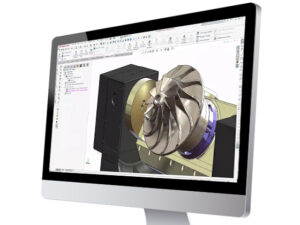The manufacturing landscape in 2024 is undergoing a profound transformation driven by the relentless pursuit of innovation and efficiency. At the forefront of this revolution stands DELMIA, offering a visionary approach to manufacturing optimization through its Virtual Twin technology.

Understanding Virtual Twin Technology
DELMIA’s Virtual Twin technology represents a groundbreaking concept that blurs the lines between the physical and digital realms of manufacturing. At its core, the Virtual Twin is a digital replica of a physical manufacturing environment, encompassing machines, facilities, products, and processes. This digital twin serves as a dynamic simulation platform, enabling companies to visualize, analyze, and optimize every facet of their manufacturing operations with unprecedented precision and insight.
Unlocking the Power of Simulation and Optimization
The true power of Virtual Twin technology lies in its ability to simulate complex manufacturing scenarios with unparalleled accuracy and detail. By accurately modeling production processes, resource allocations, and logistical workflows, manufacturers can gain invaluable insights into potential bottlenecks, inefficiencies, and optimization opportunities before they manifest in the physical world.
Through advanced simulation algorithms and optimization techniques, Virtual Twin technology empowers companies to:
- Optimize Production Efficiency: Fine-tune production schedules, minimize cycle times, and optimize resource utilization to maximize throughput and minimize costs.
- Improve Quality and Reliability: Identify quality issues, predict equipment failures, and optimize maintenance schedules to ensure consistent product quality and reliability.
- Enhance Flexibility and Agility: Respond swiftly to changing market demands, adapt production schedules on-the-fly, and optimize inventory levels to maintain agility and responsiveness.
- Reduce Time-to-Market: Streamline product development cycles, validate design concepts, and optimize manufacturing processes to accelerate time-to-market and gain a competitive edge.
Real-World Applications and Transformative Benefits
Virtual Twin technology is not just a theoretical concept; it is a practical solution with tangible benefits that are revolutionizing manufacturing across a wide array of industries. Here are some real-world applications and the transformative benefits that Virtual Twin technology brings to the table:
Automotive
In the automotive sector, Virtual Twin technology is being utilized to streamline product development processes, optimize manufacturing operations, and enhance vehicle performance. Automakers leverage Virtual Twins to simulate assembly lines, test vehicle designs, and analyze production workflows, resulting in improved efficiency, reduced time-to-market, and higher-quality vehicles.
Aerospace & Defense
In aerospace and defense, where precision and reliability are paramount, Virtual Twin technology plays a crucial role in aircraft design, production, and maintenance. Manufacturers use Virtual Twins to simulate aerodynamics, structural integrity, and system performance, allowing for more accurate predictions and faster iterations. By optimizing design parameters and production processes, aerospace companies can deliver safer, more fuel-efficient aircraft while minimizing costs and development cycles.
Consumer Goods & Electronics
In the consumer goods and electronics industry, Virtual Twin technology is driving innovation and agility in product design, manufacturing, and supply chain management. Companies leverage Virtual Twins to simulate production lines, test product configurations, and optimize packaging and logistics, resulting in faster time-to-market, reduced waste, and improved customer satisfaction. From smartphones to household appliances, Virtual Twins are enabling companies to deliver cutting-edge products that meet the demands of today’s tech-savvy consumers.
Healthcare & Life Sciences
In healthcare and life sciences, Virtual Twin technology is revolutionizing medical device manufacturing, pharmaceutical production, and healthcare delivery. Manufacturers use Virtual Twins to simulate production processes, optimize equipment layouts, and ensure regulatory compliance, resulting in safer, more efficient operations and better patient outcomes. By leveraging Virtual Twins, healthcare companies can accelerate innovation, reduce costs, and improve access to life-saving treatments and technologies.
Energy & Utilities
In the energy and utilities sector, Virtual Twin technology is driving efficiency and sustainability in power generation, distribution, and infrastructure management. Utility companies use Virtual Twins to simulate power grids, optimize renewable energy integration, and predict equipment failures, resulting in improved reliability, reduced downtime, and lower environmental impact. By embracing Virtual Twin technology, energy companies can transition to cleaner, more resilient energy systems while meeting the growing demands of a rapidly evolving market.
Embracing the Future of Manufacturing
The future of manufacturing is here, and Virtual Twin technology is at the forefront of this transformative journey. By harnessing the capabilities of Virtual Twin technology, companies can position themselves for success in the digital age, navigating complexities with confidence and seizing opportunities for growth and innovation.
Whether you’re looking to optimize production processes, enhance product quality, or streamline supply chain operations, Virtual Twin technology stands ready to empower your manufacturing journey. Embrace the future of manufacturing today and embark on a path towards excellence with Virtual Twins as your guiding force.
Learn More here
Share
Meet the Author

